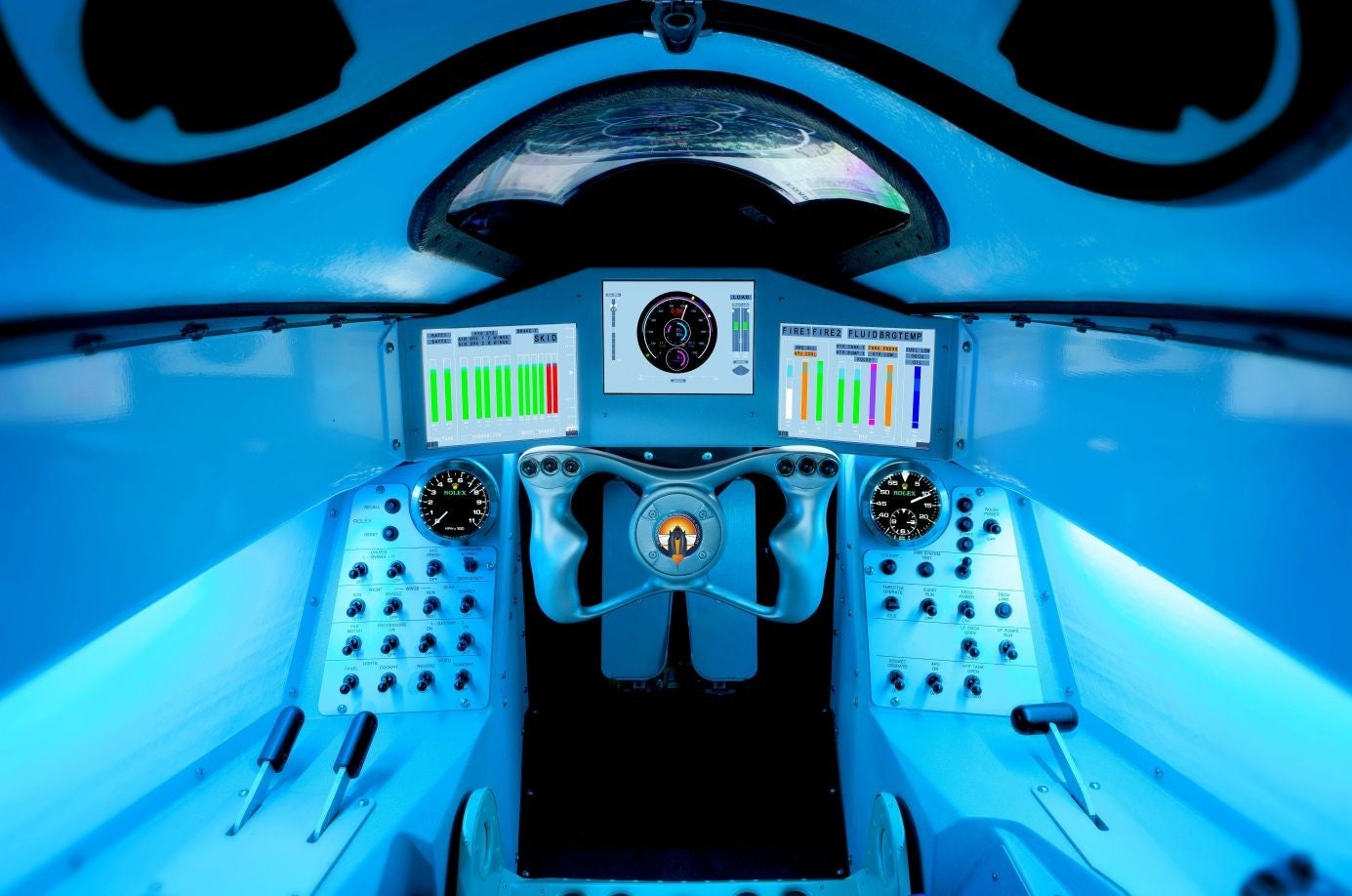Bloodhound SSC cockpit complete: this is how you control a 1,000mph car
Once completed, the Bloodhound SSS will have more horsepower than six times the power of every car on a Formula 1 starting grid

Andy Green calls it his ‘1,000mph office’: this is the newly-finished cockpit from which the 51-year-old ex-RAF pilot will be attempting to break the land speed record in 2015.
Green will be driving the £10 million Bloodhound SSC in South Africa next year in an attempt to beat the current record of 763mph (he set it himself in 1997 in the ThrustSSC) before returning in 2016 to try and break the 1,000mph (1,610km/h) barrier.
The cockpit has been constructed from layers of carbon fibre and aluminium honeycomb with a front section kitted out with ballistic armour to protect against any bits of debris that may be thrown up against it during the record-breaking drive.
The car itself is powered by an engine taken from a Eurofighter-Typhoon fighter jet and will deliver more than 135,000 horsepower – more than six times the power of every car on a Formula 1 starting grid combined.
The 200kg cockpit itself has been tailored to Green's body, with a 3D-printed steering wheel moulded to his grip offering him trigger-controls for the 14-metre long, seven-tonne vehicle's rockets.
“Land speed record cars do need quite a bit of steering because they have a tendency to slide around under all that acceleration,” Green told the BBC.
The cockpit alone is the product of more than 10,000 hours of design and manufacture, with its roof constructed to feed a series of waves of air into the jet engine.
In addition the vehicle’s 90cm wheels are constructed from solid, aerospace-grade aluminium and have been tested at rotations speeds of up to 10,496RPM to check that they are perfectly stable. A single wobble or stray vibration could be disastrous.
The Bloodhound SSC will eventually drive on a purpose-built 12-mile track in the South African desert. The track will be built on a dry lake bed that will be flat and strong enough to cope with the car’s incredible speeds.
“All of this technology will give me the most extraordinary working environment with which to get Bloodhound up to 1,000mph and also the highest level of protection we can possibly get. It’s a brilliant piece of engineering,” said Green.
Subscribe to Independent Premium to bookmark this article
Want to bookmark your favourite articles and stories to read or reference later? Start your Independent Premium subscription today.

Join our commenting forum
Join thought-provoking conversations, follow other Independent readers and see their replies